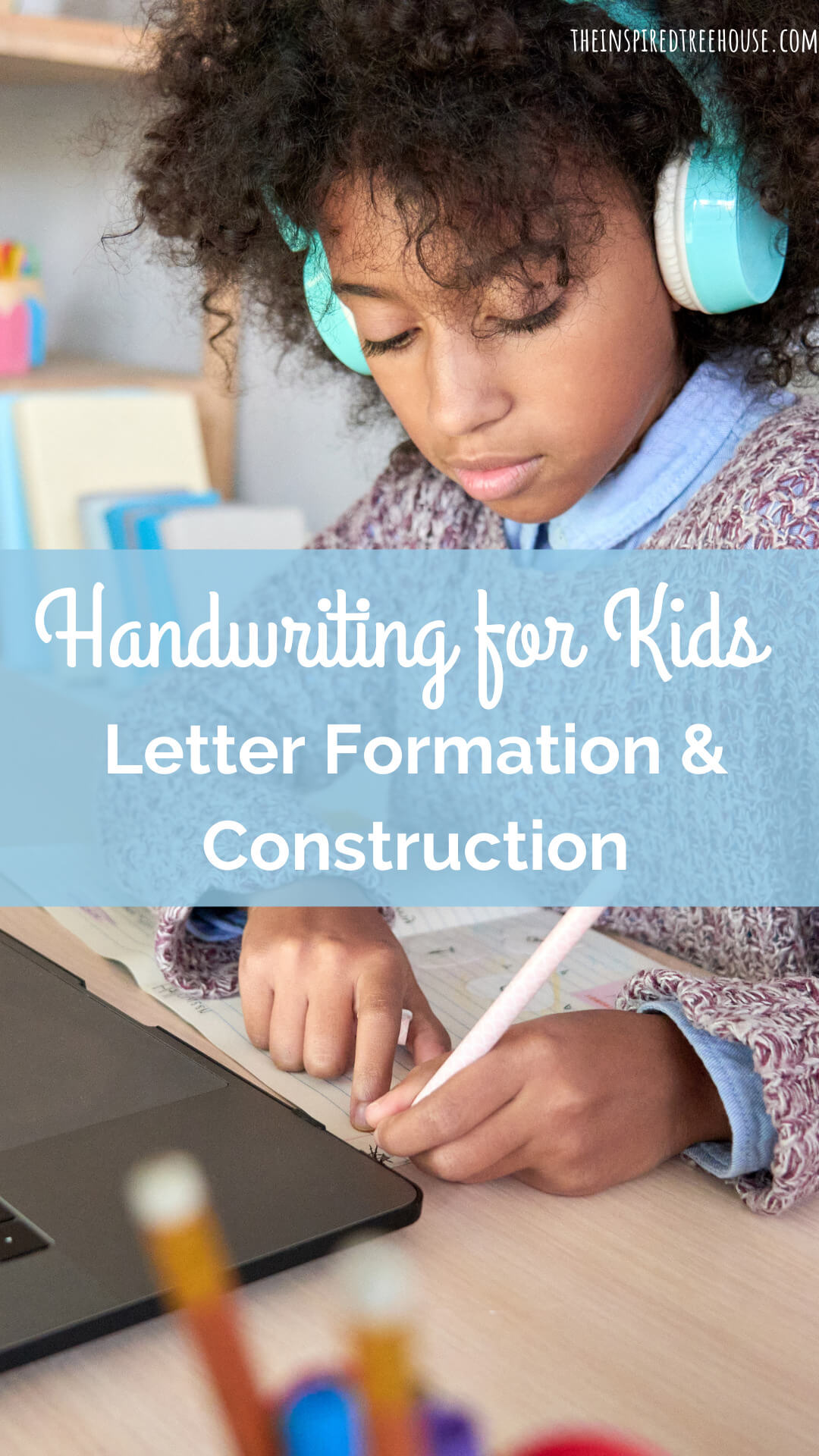Learn about letter formation and letter construction from a school-based occupational therapist.
*This post contains affiliate links. Read more.
What’s the Difference Between Letter Construction & Letter Formation?
When I work with kids on handwriting in my therapy practice, I differentiate between letter formation and letter construction. Both important skills, but very different.
I refer to the appearance and legibility of letters as letter formation.
Are the letters easy to see? Did the child use clear marks on the page? Did they use enough force on their writing utensil? Are there any reversals?
I refer to how the child actually produces each letter as letter construction.
Where did they begin writing each letter? Do they make the strokes of each letter in the correct order, or do they use an inefficient approach?
Good letter formation is important so we can actually read what kids are writing. But, if we give a handwriting book to a young child, walk away, and then return to find the whole page completed – nice and neat with pretty rows of perfectly formed letters…we might be missing something.
The child may have completed the entire handwriting page with adequate letter formation (i.e. the letters look nice and neat), but they may have used poor construction the whole way through- starting letters at the bottom, forming letters from right to left, or even going back and filling in missing parts of letters after the fact.
When kids practice making letters the wrong way over weeks and months, they form bad writing habits that are very hard to break. And while they might be able to get by for a little while in preschool and kindergarten, the smooth sailing doesn’t usually last.
As kids move into first grade and beyond, handwriting expectations in the classroom get more and more intense.
What happens when kids have poor habits related to letter construction?
They simply can’t keep up. There is a reason we teach kids to form their uppercase letters from the top down and that there is a specific approach to making each letter…and the reason is – it’s faster and more efficient! Poor construction equals slow, inefficient writing.
How to Practice Letter Construction & Formation
Letter Construction Apps
Apps that provide auditory/visual feedback as kids trace and form letters. My favorites are iWriteWords and Little Writer because they have fun pictures, fun sounds, and they require kids to restart the letter if they’re not forming it the right way!
Starting Points
When practicing writing or tracing with kids, draw “starting points” for each letter with a crayon or marker, or place a small sticker to indicate where the child should start the letter.
Verbalize the Process
During writing and tracing practice, sit with the child and verbalize what they are doing as they form each letter using the same consistent terms each time. I use some of the terminology from the Handwriting Without Tears program – big line, little line, big curve, little curve, and slide (diagonal line) for the strokes of each letter. As the child makes the strokes, I narrate what they’re doing (e.g. for letter H – “Big line down, big line down, little line over.”)
Hands-On Approach
Use a hands-on approach, allowing children to build letters using Wikki Stix, wooden pieces, or this cool play dough kit from Handwriting Without Tears. Check out this fun letter formation activity from Lemon Lime Adventures!
Appeal to the Sensory Systems
Practice writing and tracing letters using proper formation in the sand with a stick or a finger or in play dough with a pencil. This provides great tactile and proprioceptive feedback to help kids remember the proper strokes for each letter.
Appeal to the tactile system by having kids trace letters cut out of sandpaper or other textured craft paper. Or trace over learning materials with puffy paint or a hot glue gun to make them more touch-friendly!
Check out these great Multisensory Writing Activities from Mama OT

Latest posts by Claire Heffron (see all)
- Cute Zipper Bags for Therapists - April 18, 2024
- Fairy Tale Games and Toys - April 12, 2024
- The Best Emotional Regulation Books for Kids - April 8, 2024


[…] And you’ll definitely want to check out WooTape too – so great for working on handwriting skills like sizing and letter formation! […]